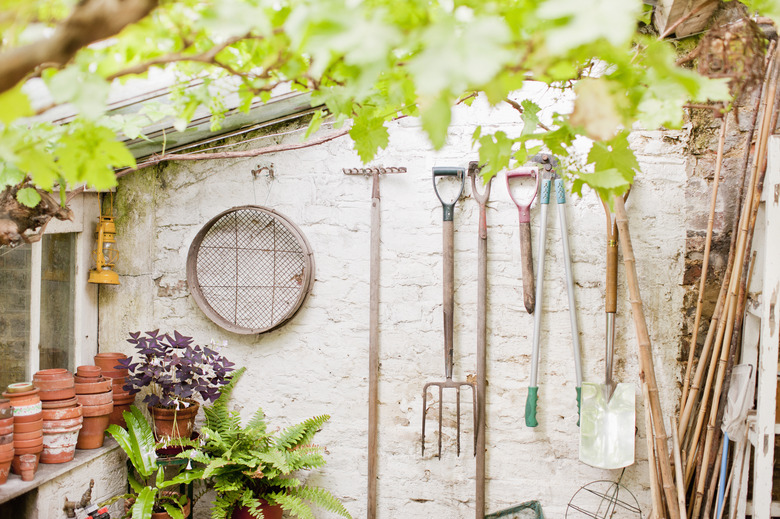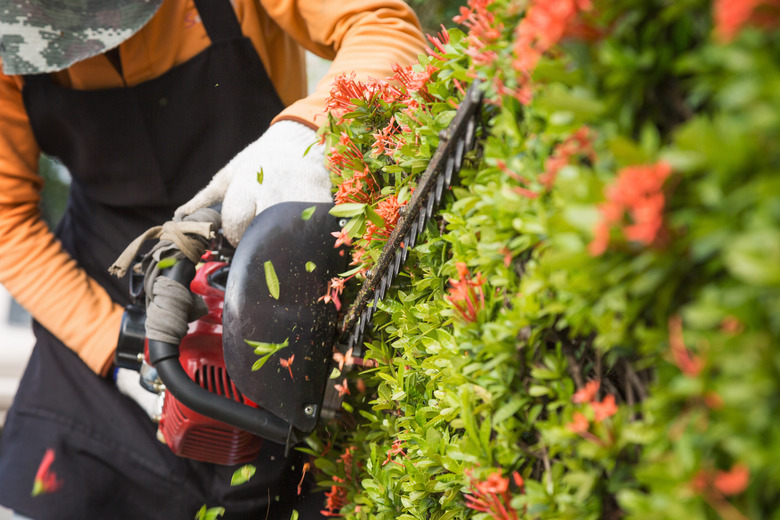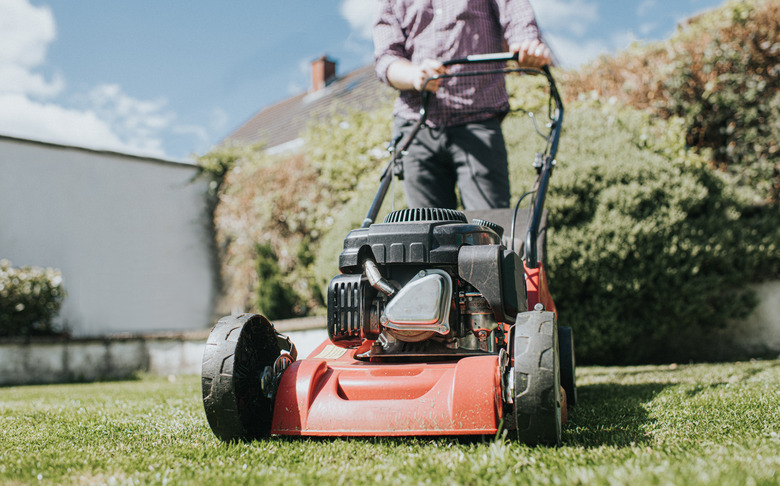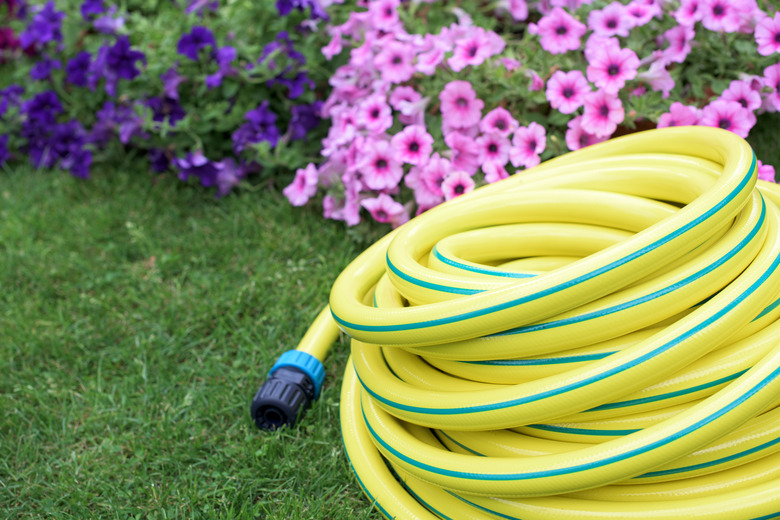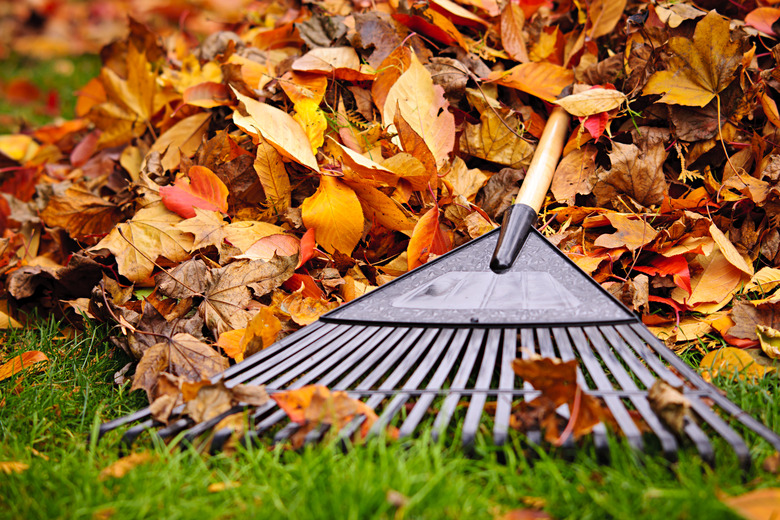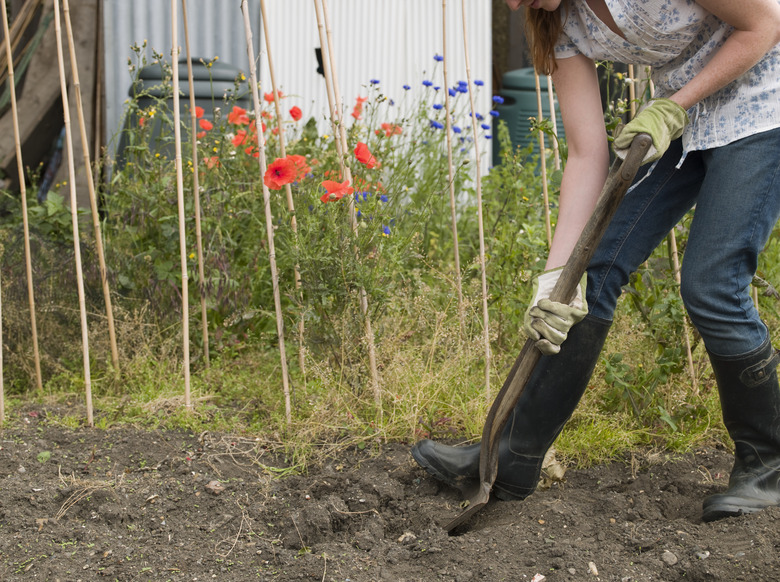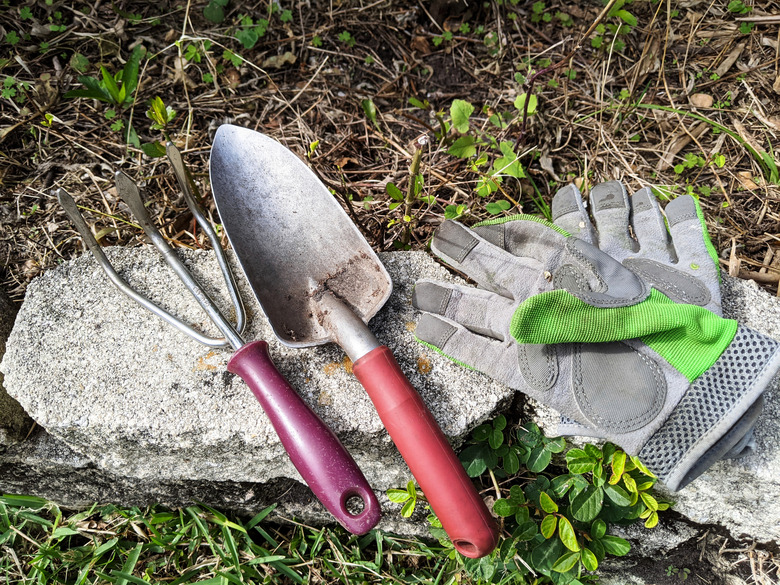A Garden Tools List For Beginners
Whether you've just bought your first home or are living in a rental home with its own yard, garden tools are an absolute must to keep those outdoor spaces tidy. Making wise choices with your first garden-tool purchases helps ensure you actually have what's needed to get the job done; for instance, the right type of shears for the shrubs in your yard can mean the difference between easy work and lots of work with little return on your time investment.
Here is a selection of basic tools that most homeowners find essential for keeping maintaining a landscape.
Powered Hedge Trimmer
Powered Hedge Trimmer
A hedge trimmer is an essential tool for any yard that has shrubs or bushes. Most shrubs will look a bit unwieldy after a few good rainfalls, and some hedges need careful trimming once or twice a year in order to keep their shape. Many shrubs are rejuvenated by an occasional hard pruning by a hedge trimmer. A power hedge trimmer looks a bit like a miniature chainsaw but actually works through a series of scissor-like cutters mounted on a long bar. It is normally used for the major work of shaping shrubs, but can also be used to simply shear off a few stray twigs.
As is true of many power garden tools, the power hedge trimmer selection was once dominated by gasoline-powered models, but today most hedge trimmers for residential use tools are electric—either corded or cordless models are available. A corded option is great if you have an outdoor outlet available, but cordless battery-powered rechargeable models are increasingly popular and dependable. A cordless trimmer weighs a bit more than a corded version, so keep this in mind if your yard has numerous shrubs or a long hedge to trim.
Handheld Pruners and Hedge Shears
Handheld Pruners and Hedge Shears
Handheld pruning shears, commonly used to trim back rose bushes and other flowering woody shrubs, are also great for trimming back long, thin tree branches or for quickly snipping those one or two shoots that are far taller than the rest of a shrub. These tools look somewhat like pliers, with short cutting jaws. Devoted gardeners will have at least couple of different pruning shears in their collection; one for woody shrubs and perhaps a smaller pair for removing spent flower blossoms.
Bypass pruners—which work through two cutting blades that pass by each other, similar to scissor blades—are better for living vegetation than anvil pruners, which have a single cutting blade that meets a solid surface to cut dead vegetation. For safety, choose pruning shears that can be locked shut when not in use.
Hedge shears, sometimes called hedge clippers, come in handy for quick trims. These look a bit like giant scissors with long handles. They're great for cutting thin shoots or narrow evergreen branches and twigs, but are a little more difficult to handle than pruning shears due to their size. Hedge shears also aren't as efficient at cutting branches more than 1/4-inch thick.
Lawn Mower
Lawn Mower
If your yard has a lawn, a lawnmower purchase may well be first on your shopping list. Options abound for mowers; you won't need a tractor-style riding mower unless the property is huge. For yards small enough to mow without a riding mower, a gas-powered mower will provide optimal power, while electric mowers are great for yards small enough to mow in under 30 minutes. Both corded and cordless versions will do an ample job of mowing grass that's of moderate length. A corded mower is ideal for a tiny yard that can be mowed with the reach of a single outdoor heavy-duty extension cord. The downside: keeping an eye on the cord to ensure you don't mow over it.
A cordless mower uses a rechargeable battery. Just be sure to charge it after every use or two, and keep the charger and battery indoors. You may want to invest in an extra battery to ensure you never are without a charge.
A reel mower, which relies solely on human power to rotate the cutting blades around its drum, offers a completely eco-friendly way to mow a small yard. Some models, especially older, used models, are hard to push, making it quite a chore to mow even a small area. These also do not perform well on tall grass.
Garden Hose
Garden Hose
A basic garden hose does so much more than water the plants and lawn. Use it to wash the car, clean the patio furniture, or hose the pollen off items left outdoors. A standard garden hose that's durable and has a standard 5/8-inch diameter is the type needed to fit the average water supply. Vinyl hoses are the least expensive in general, while more expensive rubber or rubber-reinforced hoses stand up to weather fluctuations better over time. For watering lawns or gardens, you may want to invest in one or two sprinklers of different sizes. A soaker hose, which has holes throughout the hose body and is used for gradual watering, isn't generally necessary for basic lawn and garden care, though it may be helpful if you are a garden hobbyist.
Spray Nozzles and Water Wands
Spray Nozzles and Water Wands
Increase the capabilities of your garden hose with a spray nozzle. Look for a heavy-duty nozzle that has numerous options such as spray, jet or mist—this way, you'll be able to water the lawn, mist hanging plants and wash bug residue off the driveway or your car's wheels with ease. Opt for a version that sprays without requiring you to hold down a trigger the entire time, or that has a locking mechanism to hold the trigger in place for a continuous spray. You may find that a water wand is easier to use because it provides that extra "reach" inside flowerbeds or up to hanging baskets.
Garden Rake
Garden Rake
A garden rake is a short-toothed sturdy tool that will come in handy for everything from combing rocks out of soil to pulling out myrtle vines that crowd the more delicate plants in your garden. Look for a model with a head tightly secured to the handle; even a yard-sale find will suffice. Garden rakes also come in handy for leveling soil or mulch—just flip the rake over, tines up, and drag the rake through the loose materials to help distribute them evenly.
Leaf Rake
Leaf Rake
A leaf rake is another must-have tool, useful most of the year. Besides cleaning up fallen leaves, this type of rake comes in handy for cleaning up mowed grass, whether it's on the sidewalk or on the lawn. A version with metal teeth or tines may last a bit longer than its plastic counterpart, as the plastic teeth sometimes crack or snap off entirely. As with other garden tools, look for a model with the rake head securely fastened to the handle.
Shovels and Spades
Shovels and Spades
At least one shovel and one spade should be on hand in the garden shed or garage, ready when needed. Numerous variations exist for each, but in general, a garden shovel is the style with rounded, curved blade that forms a slight point, while a spade is a type of shovel with a flat blade with a straight edge.
For general homeowner use, the first choice is a standard digging shovel, sometimes called a garden shovel or round-point shovel. Use it to dig and scoop out dirt for a garden or dig up a shrub to transplant. More serious landscapers will also want to add a flat-tipped spade, which will be useful when digging out a straight-sided plot for a garden or for dividing thick plants. Some spades dig deeper than a typical shovel, but the blade is a lot narrower and not as good at scooping dirt out of a hole.
Hand Trowels and Cultivators
Hand Trowels and Cultivators
For any homeowner who does any amount of gardening, a hand trowel and hand cultivator are must-have tools. A hand trowel or garden trowel is shaped like a tiny shovel—perfect for digging small holes in a garden to plant young tomato seedlings or flowers, for instance. Trowels are readily available in any store with a garden section and are sometimes sold in a set with a hand cultivator—a tool that resembles a small rake with three prongs. The cultivator is great for breaking up hard chunks of soil or loosening the surface layer before planting flowers. It can also be used to cut a shallow line in soil for planting seeds. Look for durable tools with metal heads securely fastened to their handles.
Weeding Tool
Weeding Tool
A weeding tool, also sometimes sold as part of a set with a hand trowel and cultivator, works well for prying out young dandelions and smaller weeds by their roots. It looks a bit like a screwdriver with a wide, flat blade with a notch in the center. It can also be used in a pinch to break up clumps of hard dirt.
